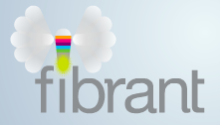More Details Emerging about Fibrant in Salisbury
The nation's newest community fiber network (FTTH) is launching in Salisbury, North Carolina, in the next month. Fibrant, a $29 million project financing by general obligation bonds, is slightly behind schedule but way ahead of the cable and DSL competition.
The City Council has approved the network's pricing in anticipation of hooking up customers in October. Some 70 people have been testing the network, but it will soon be available to everyone in the community. The basic tier of broadband speeds is 15Mbps and they have a second tier at 25 Mbps. The network is capable of much faster speeds but these are the tiers they will start with, making them the fastest basic tier available in North Carolina.
They are offering over 460 television channels, of which 100 are HD. HD quality over fiber-optics tends to be the highest quality viewing experience (though not everyone can tell, depending on their level of obsession with picture quality) but the first year or so of video service on Fibrant may suffer from occasional problems as they iron out the quirks of the new system. Reports of the broadband and voice services are tremendously positive.
They have made it clear that they cannot get into a price war with incumbents (Time Warner Cable and AT&T) and cannot beat the "promo" prices these companies offer for the first x months. However, Fibrant's rates are 7-10% lower than the regular rates of the incumbents and will come with local, superior, customer service.
Big companies like Time Warner Cable often claim they are at a disadvantage relative to these municipalities but the reality is that the massive scale of national cable and phone companies give them many more advantages to offer lower prices for their services (which tend to also be lower in quality).
“If you get deal you can’t refuse from someone else, just thank Fibrant for it because you wouldn’t have gotten it if we hadn’t been here,” Clark [Fibrant Marketing Director] said.Fibrant aims for a 30% take rate (4400 subscribers) by the end of year 3 and a positive cash flow in year 4. Pricing and channels lineups are available at the end of this Salisbury Post article.



